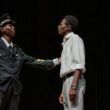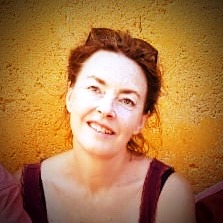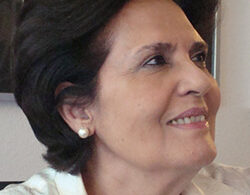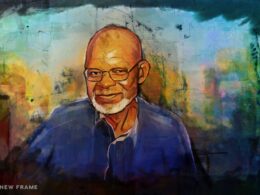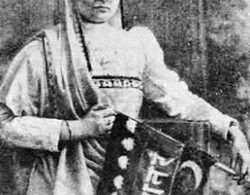I have been asked to write about someone I loved that recently passed away, a legend, icon and a PEACE activist, the Kenyan graffiti artist Solomon Muyundo, alias Solo 7. To honour and give justice to his legacy I have interviewed people, read articles and watched several videos and documentaries.
Solo 7 was born in Bungoma County but relocated to Kibera slum in 2003 after his family couldn’t afford to pay his fees for Secondary School. In Nairobi he turned to art and made a living as a sign writer. Solomon shortened his name when he started to work and walk ‘solo’ as he got engaged in the post-election violence that erupted in 2007, which resulted in more than 1000 persons killed in Kenya. He added seven to his name, as it was a special number to him: he was born in the seventh month of the year in 1977, his names contained seven letters each and he was the seventh born child.
Solo 7 belongs to the small group of people in our society and world, today and yesterday, which don’t stand by and watch but take action against abuse, injustices and violence. When the opposition called out large crowds to demonstrate against the election results in the end of 2007 he didn’t hesitate, he hit the streets equipped only with white charcoal crayons and started to protest in his own way amidst the violent demonstrations that broke out around him. He protested by writing messages of PEACE. He ran ahead of the agitated and armed crowd of demonstrators driven by anger and wrote KEEP PEACE ALIVE on the tarmac right in front of their feet. He marked houses they were about to pass with the party logo they favoured that resulted in properties saved and probably person’s lives as well.
His brave way of demonstrating was also noticed and appreciated in his community; his actions made a difference. He continued. This time he was armoured with a brush and paint. In only a few weeks the informal settlement Kibera, a ghetto that hosts approximately 600,000 inhabitants in an area the size of Central Park NY, was covered with messages of PEACE. In central places you could meet Solo 7 artwork signed with his name every few meters. He would finally write 5,000 PEACE messages on walls, windows, roads, doors, toilets, trees and even on his own dog, during those crazy times of political crises that still haunt Kenya.



Solo 7´s graffiti was effective and to the point. Using capital letters and white paint made them visible from far. Repeating the same word over and over again; KEEP PEACE ALIVE, PEACE IS LIFE, PEACE WANTED ALIVE and similar combinations caught attention. Repetitions are attractive to gaze upon and in this case to experience as you walked through the villages of Kibera. The messages created patterns in time and the word PEACE bounced from one colourful wall of the ghetto landscape to another as you moved along, like a silent echo.
As an architect by education I was always amazed how each layout and composition was perfect and how he was able to paint straight lines and keep the same distance between each word, something I thought was impossible without a ruler before I met him. And any Japanese Sumi-e artist from the 2000-year-old and spiritually loaded art rooted in Zen Buddhism, artists who invest years of practice to make perfect strokes with brushes, would have been impressed to see Solo 7 in action while he was painting.
It didn’t take long before the journalists, the third group who attend violent political demonstrations, noticed the one-man visual artist and PEACE activist who was moving from one place to another, determined but still calm, squatting while painting, fast and without hesitation, on the tarmac, in the middle and in between large groups of demonstrators and the police. The protestors were carrying machetes, throwing stones, looting, setting houses on fire, burning tires and clashing violently with the Kenyan police who used teargas and real live bullets.

When the turmoil finally ended the people of Kenya were deeply wounded and still divided. It was calm only on the surface. Neighbours who had fought each other were bitter. It is hard to heal wounds of war when people’s lives have been lost. Solo´s quest for PEACE wasn’t over. He started an art school for children; The Solo 7 School of Ideas. The children who joined had turned to Solo 7 themselves, copying his writing and painting of walls. He realized that art can heal emotional wounds and fight trauma and was able to raise funds from generous donors to rent a space and let the children express their feelings through paint, drawings and colour. The children came from different tribes – many of Kenya´s 44 tribes are represented in Kibera – and with time and with the support from Solo 7, the kids were able to encourage parents and families to reconcile and heal as well.
Solo 7 also belongs to the small group of people who become world famous overnight. Articles, interviews and photos of his work turned up in different corners of the world. His work has been featured in AP, Reuters, The Guardian, BBC and more. And his own statement that ‘art speaks’ and ‘signs can speak louder than voices’ proved to be more than true. He also belonged to yet another and even smaller group of people who have been nominated for the Nobel PEACE Prize. And even if he wasn’t selected, perhaps it was the same year Barack Obamba was selected, I don’t remember, it was a sign of recognition and of the importance and impact his work has had.
In 2015 he was invited to United Nations HQ in Nairobi to give a speech during the PEACE Talks conference. There is a clip from his performance available on Internet and if you watch it I am sure you will also be struck by how calm he is. Confident, well-spoken and still able to keep his soft tone of voice that betrayed his unpretentious personality. A speech that was delivered as professionally, and with the same ease, that he was able to paint PEACE with straight lines. And I think he was able to avoid being nervous that day at the UN the same way he was able to work in the midst of chaos with bullets and stones flying over his head, he did neither to promote himself but only to communicate his message of PEACE.
Something he did over and over again over the years to come in Kibera, during each clash of violence between demonstrators and the police and during every election ever since. Unfortunately the political unrest of a country divided along ethnic lines still remains an unsolved and critical problem in Kenya. In another clip from a video interview, one of the last I think, Solo 7 shares his dream of creating a movement of PEACE all over the world, from homes to cities, between countries and around our globe.

Someone taught me long time ago that if you want to know someone the best way is to walk with them in their neighbourhood. How they are greeted and how they interact with others will show if they are liked, disliked or even noticed. Having worked in Kibera and in many other slums since 2008, as well as in big cities and in other parts of the world, I have walked beside many, both rich and poor in their ‘hood’ but no one has ever been close to being received in the same positive way as Solo 7 was. It wasn’t only the smiles, people shouting his name from far, or that he was greeted from left, right and front, but the fact that he was clearly respected. And even if Solo 7 must be the most famous person Kibera ever produced his fame never changed who he was; he remained a humble hero.
Neither did the deal with huge red billboards spreading PEACE WANTED ALIVE with the Coca Cola logo all over Kenya bring him wealth or buy him an apartment, something that usually comes along with fame and huge campaigns like this; but on his own request only provided funds that enabled him to continue to run his school of art for children and PEACE for another two years in Kibera.
I loved laughing with Solo 7, his sense of humour made him have a magic light around him, he didn’t say much at all, he let his art speak instead. He was calm, almost shy like any person who prefers to be in the background, showing up in simple but always cool looking clothes, often with paint in his beard and his dreads sticking out under his hat. It was only his eyes that could betray he was special, they glittered of old wisdom. Solomon Muyundo lived life like he loved it and stayed in Kibera, a shanty town he called ‘a place of ideas’ until he fell unwell and finally travelled to his home upcountry where he passed away on 29 July 2020, only 43 years old. Solo 7 worked selflessly to make the world a little bit better and I think his absence will be present and continue to remind us of the importance of PEACE.
If you happen to pass Kibera in the next week, month or year, take your time to look on the shops along Kibera Drive; I am sure some of his PEACE messages will still be there.
RIP SOLO 7, rest in the PEACE you strived for.




